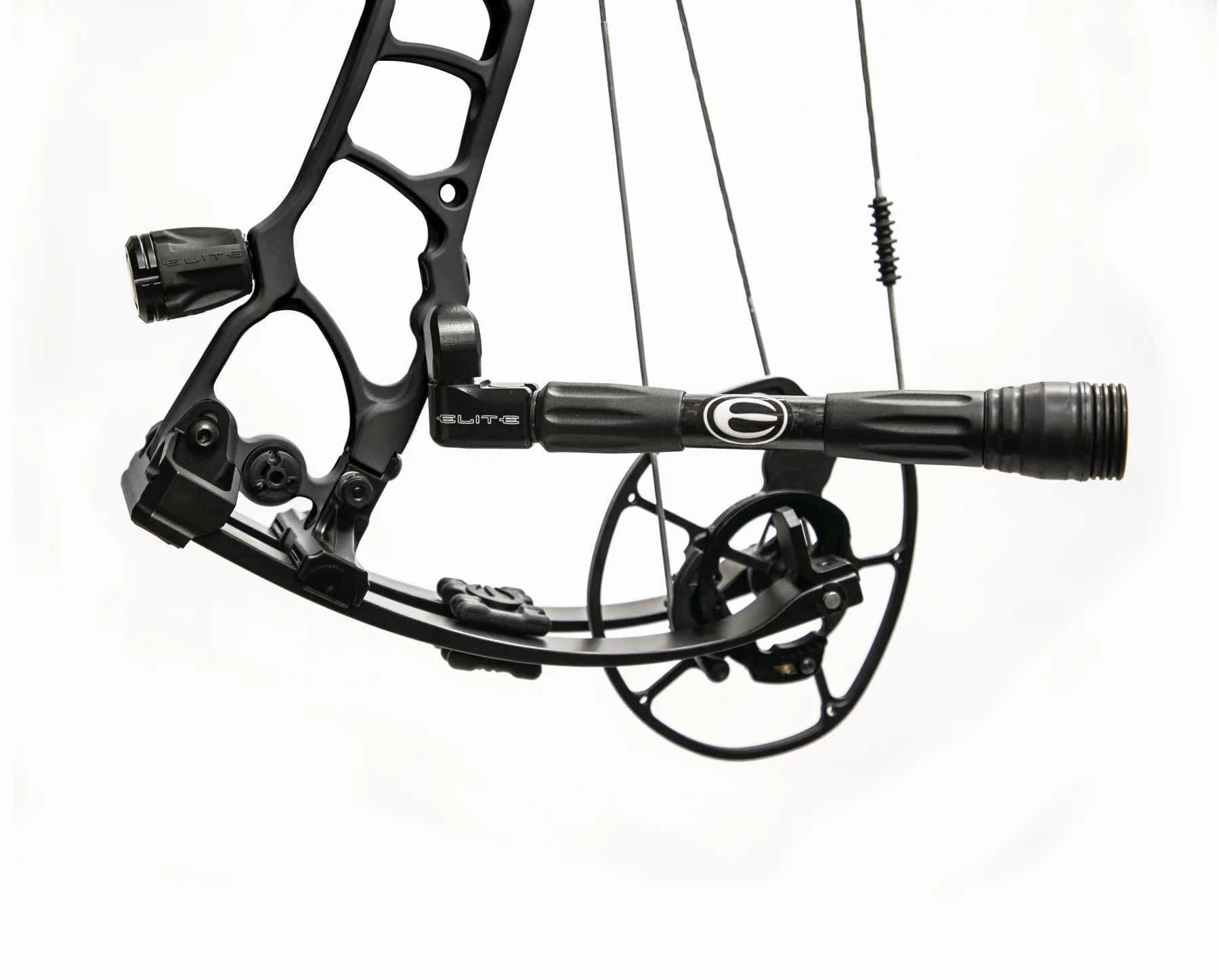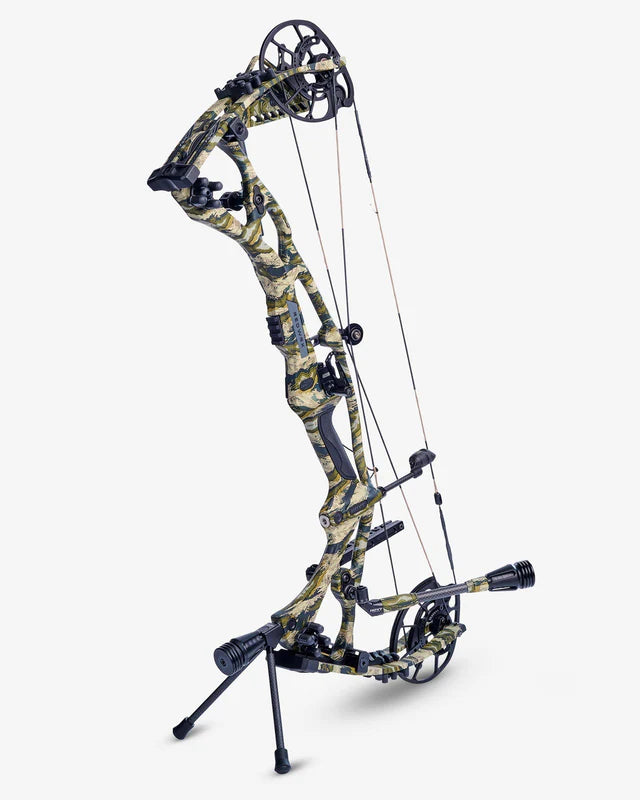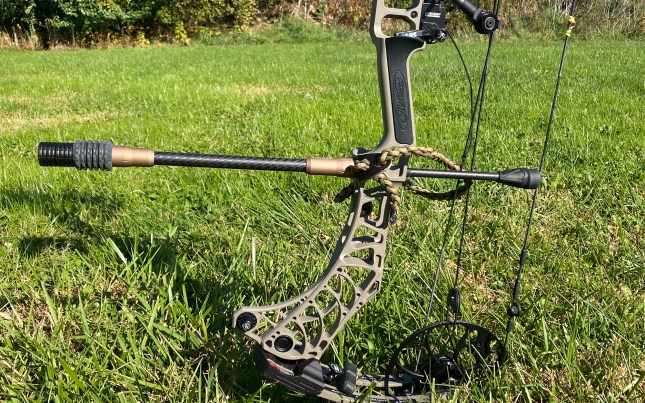Increase Your Archery Efficiency: The Ultimate Overview to Bow Stabilizer Configuration
Enhancing your archery performance requires a meticulous strategy to every element of your tools configuration. Amongst the various parts that add to accuracy and security, the bow stabilizer plays a critical role in improving your shot execution. Comprehending how to maximize your bow stabilizer configuration can result in significant improvements in your general precision and uniformity on the range or in the area. As we explore the ins and outs of choosing the right stabilizer weight, positioning, and adjust techniques, you will certainly discover the secret to unlocking your full potential as an archer.
Recognizing Bow Stabilizers
In the realm of archery tools, the role and feature of bow stabilizers stand as essential elements for enhancing shooting precision and security. Bow stabilizers are designed to minimize bow torque, decrease resonances, and help in holding the bow steady throughout the aiming and launch process. By attaching a bow stabilizer to the riser of the bow, archers can experience enhanced balance and minimized hand shock, resulting in even more consistent and exact shots.
The key objective of a bow stabilizer is to dampen any type of vibrations that occur upon launching the arrow. This decrease in vibration not only boosts the shooter's comfort however also helps preserve emphasis and control throughout the shot cycle. Furthermore, bow stabilizers help in counterbalancing the weight of accessories connected to the bow, such as sights, quivers, and arrowhead rests, guaranteeing optimal weight circulation for improved stability.
Comprehending the mechanics and advantages of bow stabilizers is critical for archers seeking to tweak their shooting performance and attain better accuracy on the variety or in the area.

Selecting the Right Stabilizer Weight
Selecting the proper weight for your bow stabilizer is a critical aspect of optimizing your archery arrangement for boosted shooting performance. The stabilizer weight directly influences how effectively the stabilizer lowers resonance and maintains your bow during the shot. When picking the appropriate stabilizer weight, it's necessary to consider your capturing style, bow equilibrium, and personal choices.
Lighter stabilizers, generally weighing between 3-6 ounces, are preferred by archers that prioritize ability to move and fast target procurement. These stabilizers are optimal for hunters or those that shoot in difficult surfaces where flexibility is essential. On the various other hand, much heavier stabilizers, ranging from 8-12 ounces or even more, are preferred by target archers looking for maximum stability and reduced bow activity. The added weight helps hold the bow steadier during the aiming process and decreases the impacts of torque on the bow.
Inevitably, the finest stabilizer weight for you will rely on your capturing objectives and choices. Trying out with various weights and finding the one that uses the optimal equilibrium of security and ability to move is key to improving your archery efficiency.
Installing Your Bow Stabilizer
To correctly install your bow stabilizer, ensure that you have all the essential tools and follow these step-by-step guidelines for a safe and secure and efficient configuration. Begin by identifying the front stabilizer bushing on your bow riser. Most bows have pre-threaded openings for stabilizer installation. Next, apply a percentage of bowstring wax to the threads of the stabilizer screw to avoid it from loosening during use.
Meticulously thread the stabilizer right into the front bushing by hand, ensuring not to cross-thread it (bow stabilizer). When the stabilizer is comfortably in position, utilize a proper wrench to tighten it securely. Stay clear of over-tightening, as this can trigger damage to the bow or stabilizer
After setting up the stabilizer, check to guarantee it is straight and straightened with the bow. Some stabilizers include adjustable weights or dampeners; adjust these according to your choices and shooting design. Finally, test the acquiesce guarantee the stabilizer is successfully reducing vibration and improving your shot consistency.
Adjusting Stabilizer Placement for Precision
After installing the bow stabilizer firmly, optimizing its placement is essential for improving accuracy in your shooting. Relocating the stabilizer better to the riser can assist lower the bow's general weight circulation, possibly improving your aiming stability.
When adjusting the stabilizer position, consider the kind of capturing you do. For target archery, a longer stabilizer placed even more out could be beneficial for included security during the intending process. On the other hand, seekers might favor a shorter stabilizer for much better maneuverability in the field. Keep in mind to make small go modifications and examine your configuration after each adjustment to determine the optimum position for your capturing design and choices.
Fine-Tuning Your Stabilizer Setup

Additionally, take into consideration the placement of any kind of dampeners or weights along the stabilizer rod. Relocating these elements closer to or further Find Out More from the riser can alter the stabilizer's total result on your bow's balance. Fine-tuning these information can help in reducing resonance, reduce hand shock, and improve total control during the shot implementation.
Consistently reassess your stabilizer setup as your capturing strategy evolves to ensure it continues to match your form and shooting objectives. By finetuning your stabilizer configuration with precision and treatment, you can maximize your bow's efficiency and elevate your archery skills to new elevations.
Verdict
To conclude, maximizing your bow stabilizer configuration is essential for boosting your archery efficiency. By understanding the function of stabilizers, selecting the suitable weight, appropriately installing and placing the stabilizer, more and tweak its configuration, you can improve your accuracy and consistency in capturing. Make the effort to experiment with different configurations and adjustments to discover the arrangement that works best for you and helps you achieve your archery goals.
Bow stabilizers are designed to decrease bow torque, lower vibrations, and aid in holding the bow steady throughout the intending and release procedure. By connecting a bow stabilizer to the riser of the bow, archers can experience enhanced equilibrium and lowered hand shock, resulting in even more specific and constant shots.

The stabilizer weight directly influences how properly the stabilizer decreases vibration and maintains your bow during the shot. bow stabilizer. By comprehending the objective of stabilizers, choosing the proper weight, properly mounting and placing the stabilizer, and adjust its arrangement, you can enhance your accuracy and consistency in capturing